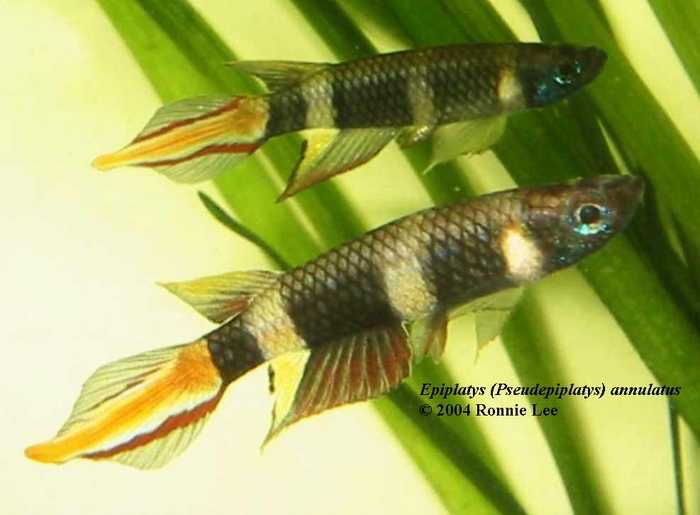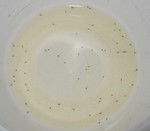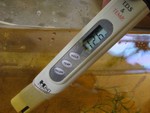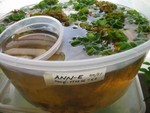A tip from the unfriendly neighborhood geneticist:
In a crossing event followed by random mating the ratio of the various gene variants (alleles) will remain in equilibrium (Hardy-Weinberg equilibrium). To alter this equilibrium you need to ruthless select for phenotypes you don't like.
Lets assume the red in the anal is controlled by gene A and red in the pelvics is controlled by gene B and the intensity of the yellow is controlled by gene C. Now we assume the asian and European strains had different alleles so we have AABBCC crossing with aabbcc.
In the f_1 generation you will get the genetic combination AaBbCc but there were only 10 fish and so a total of 20 alleles. The frequency of allele A would be 50% etc... In the next generation you will get a spread of allele combinations but the frequency of alleles will still be 50%.
For simplicity lets assume the aabbcc fish are not what you want and you can spot them easily. But the aabbcc phenotype will only be found in 1 in 64 fish (8 possible gene combinations from the f_1 generation). This means you will reduce the frequency of the undesirable genes only buy7 2% each generation assume a minimum of 3 genes effecting the colours you want. The odds are there are much much more.
My advice is for you select the absolute best males that near your "ideal" of what is best. If you only have one "best" male then fine. Set him up and put 1 female with him at a time and collect the fry. Then replace the female with another and carry on like that.
Raise each brood separately and discard broods that have not been an improvement. Only keep broods where the number of "best-like" males increase. Then, if this is possible, cross those brood's females to the original males. If this is not possible then cross them to the very "best" male. Repeat this process. If possible establish several lines because you will be fixing bad as well as good genes a long the way that you may not be outwardly aware of.
Colour is the easiest strait to fix and easiest to manipulate. Then you will have to work on fertility... But I suspect both the European and Asian strains are old and fertility is not a problem.
My main point (in case you missed it) is that if you only select the best males form each generation progress will be slow. You have to select for the best female too. If you cannot do this outwardly then you have to take your chances. You have about a 12% chance of picking the correct female to breed with (i.e. a female that has a copy of each allele) so you will have to pick at least 8 females to work with randomly, work with each individually and hope for the best.
Genetics is gambling but we can stack the deck in our favour.
Best of luck
(and keep me in mind when you have the "perfect" strain)
tt4n
















 Reply With Quote
Reply With Quote



Bookmarks